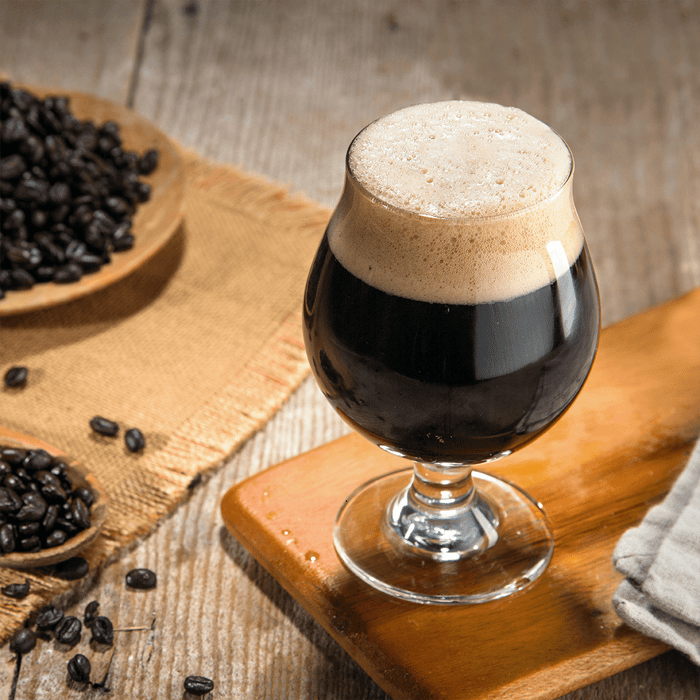Every Australian brewer has experienced that sinking feeling – you've carefully crafted a batch, waited patiently through fermentation, and finally cracked open that first stubby only to discover something's seriously off. Maybe your wheat beer tastes like green apples, or your lager has picked up butterscotch notes that weren't in the recipe.
Off-flavours are universal brewing experiences, whether you're brewing in a Brisbane garage during summer or a Melbourne shed in winter. The encouraging reality is that most off-flavours follow predictable patterns, and understanding these patterns transforms brewing failures into valuable learning experiences.
Essential Brewing Practices for Clean Beer
Before diving into specific off-flavour troubleshooting, let's establish the fundamental practices that prevent most quality issues:
Rigorous Sanitation – This principle cannot be overstated. Every piece of equipment contacting beer after the boil requires thorough cleaning and sanitising. Invest in quality sanitisers and use them religiously.
Yeast Health Management – Quality fermentation starts with healthy yeast. Liquid yeasts benefit from proper starter cultures, while dry yeasts need rehydration within use-by dates. Fresh, viable yeast prevents numerous fermentation faults.
Proper Wort Oxygenation – Dissolved oxygen supports healthy yeast metabolism. Whether using vigorous shaking or dedicated oxygenation systems, ensure adequate aeration before pitching.
Temperature Control Systems – Australian conditions demand attention to fermentation temperatures. Each yeast strain performs optimally within specific ranges.
Step-by-Step Off-Flavour Diagnosis
Step 1: Identifying Apple and Cider Notes (Acetaldehyde)
Recognition: Sharp, green apple flavours that make beer taste more like cider than intended.
Diagnosis: Acetaldehyde indicates incomplete fermentation. This intermediate compound should convert to ethanol during proper fermentation cycles.
Root causes include:
- Inadequate yeast pitching quantities
- Fermentation temperatures outside optimal ranges
- Insufficient wort oxygenation
- Premature packaging decisions
Corrective measures:
- Calculate appropriate yeast quantities using online calculators
- Implement temperature control for Australian conditions
- Aerate wort thoroughly before yeast addition
- Allow complete fermentation before packaging
Step 2: Addressing Buttery Characteristics (Diacetyl)
Recognition: Butter, butterscotch, or movie popcorn flavours.
Diagnosis: Diacetyl forms naturally during fermentation but should be reabsorbed by healthy yeast. Retention indicates fermentation stress or inadequate cleanup phases.
Australian considerations: Higher temperatures can stress yeast and increase diacetyl production.
Prevention protocols:
- Maintain consistent fermentation temperatures using refrigeration or cooling systems
- Provide yeast nutrients for challenging high-gravity fermentations
- Allow adequate time for diacetyl reduction phases
- Consider diacetyl rests for lager production
Step 3: Managing Excessive Ester Production
Recognition: Banana, pear, or floral notes inappropriate for the beer style.
Diagnosis: Esters develop during fermentation and contribute significantly to beer character. The challenge involves achieving appropriate levels for intended styles.
Control strategies:
- Reduce fermentation temperatures – particularly important in Australian summers
- Increase yeast pitching rates to reduce fermentation stress
- Ensure adequate wort aeration before fermentation
- Consider yeast strain selection based on ester production characteristics
Step 4: Eliminating Phenolic Off-Flavours
Recognition: Spicy notes like clove or cinnamon, progressing to medicinal or plastic characteristics in severe cases.
Diagnosis: Phenolic compounds create desirable characteristics in some styles but become problematic when excessive.
Australian factors: Some regional water supplies contain chlorine compounds that exacerbate phenolic development.
Solutions:
- Test local water supplies for chlorine and treat accordingly
- Consider filtered or bottled water for sensitive styles
- Select yeast strains appropriate for intended flavour profiles
Step 5: Controlling Fusel Alcohol Formation
Recognition: Hot, solvent-like characteristics creating harsh throat sensations.
Diagnosis: Higher alcohols form when yeast experiences stress, particularly from temperature fluctuations common in Australian brewing conditions.
Management approach:
- Implement precise temperature control throughout fermentation
- Consider fermentation refrigeration systems for temperature-sensitive styles
- Allow extended conditioning periods to integrate harsh alcohol notes
Step 6: Preventing DMS Development
Recognition: Sweet corn, cooked vegetable, or cabbage-like flavours.
Technical understanding: DMS originates from compounds in pale malts and requires proper boiling technique for removal.
Australian brewing note: Extended hot weather can complicate wort cooling, potentially increasing DMS formation.
Prevention techniques:
- Maintain vigorous, uncovered boiling for minimum 60 minutes
- Implement rapid wort cooling systems
- Minimise time at elevated temperatures post-boil
- Ensure adequate kettle ventilation during boiling
Step 7: Avoiding Acetic Contamination
Recognition: Sharp, vinegar-like acidity.
Reality check: This indicates bacterial contamination and cannot be corrected once established.
Australian prevention focus:
- Higher temperatures and humidity increase contamination risks
- Implement comprehensive sanitation protocols
- Maintain closed fermentation systems
- Replace worn equipment regularly
- Consider climate-controlled fermentation spaces
Australian Brewing Environment Considerations
Australia's diverse climate zones create unique brewing challenges. Tropical regions face year-round temperature management issues, while temperate zones experience seasonal variations requiring different approaches.
Many successful Australian brewers invest in fermentation temperature control systems, recognising that consistent temperatures often determine the difference between good and exceptional beer. Evaporative cooling systems work well in dry climates, while refrigeration becomes necessary in humid conditions.
Australian water quality varies significantly between regions. Understanding local water profiles helps optimise recipes and prevent mineral-related off-flavours. Some areas benefit from water treatment, while others provide excellent brewing water naturally.
The popularity of Australian hop varieties has encouraged experimentation with bold hop combinations. However, hop-forward styles require particularly clean fermentation to showcase hop character effectively. Off-flavours that might remain hidden in malty styles become prominent in hop-showcasing beers.
Developing Professional Brewing Standards
Building expertise in off-flavour identification requires systematic practice. Consider joining local homebrew societies where experienced members regularly conduct educational tastings. Many groups organise fault identification workshops that accelerate learning curves.
Maintain detailed brewing documentation including ingredients, procedures, temperatures, and final beer evaluations. This record-keeping proves invaluable when diagnosing recurring issues or replicating successful batches.
Professional breweries occasionally produce flawed beer, but their systematic approach to quality control minimises occurrences. They implement preventive measures, maintain strict protocols, and continuously refine processes based on analytical results.
Focus on mastering individual process elements rather than attempting comprehensive improvements simultaneously. Systematic development builds lasting expertise more effectively than scattered efforts.
Consider palate training through commercial beer evaluation, focusing on both positive and negative flavour characteristics. Understanding how flavours should taste makes identifying problems much easier.
Got questions on off flavours - get in touch - we're always up for a proper brewing discussion!
Grainfather Team










